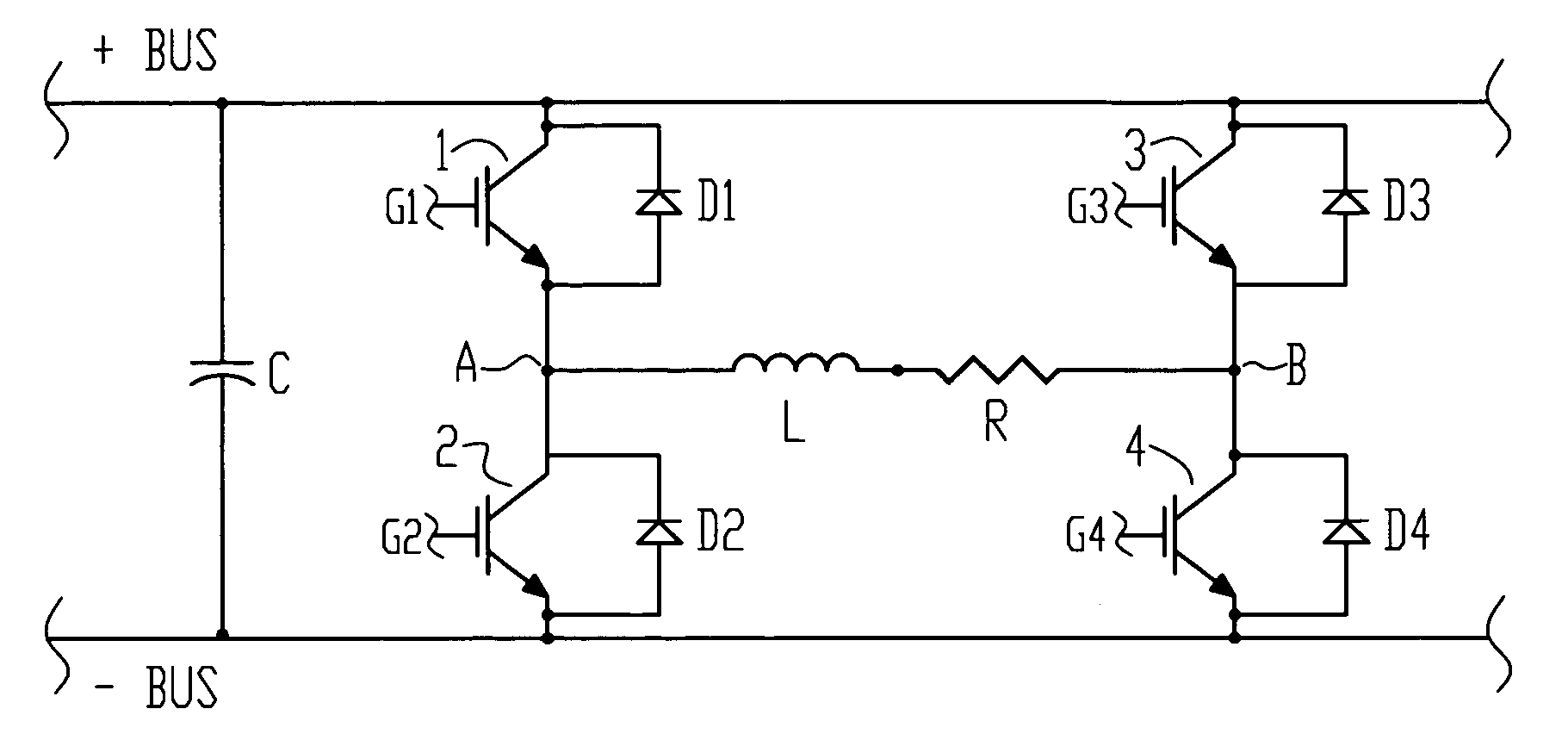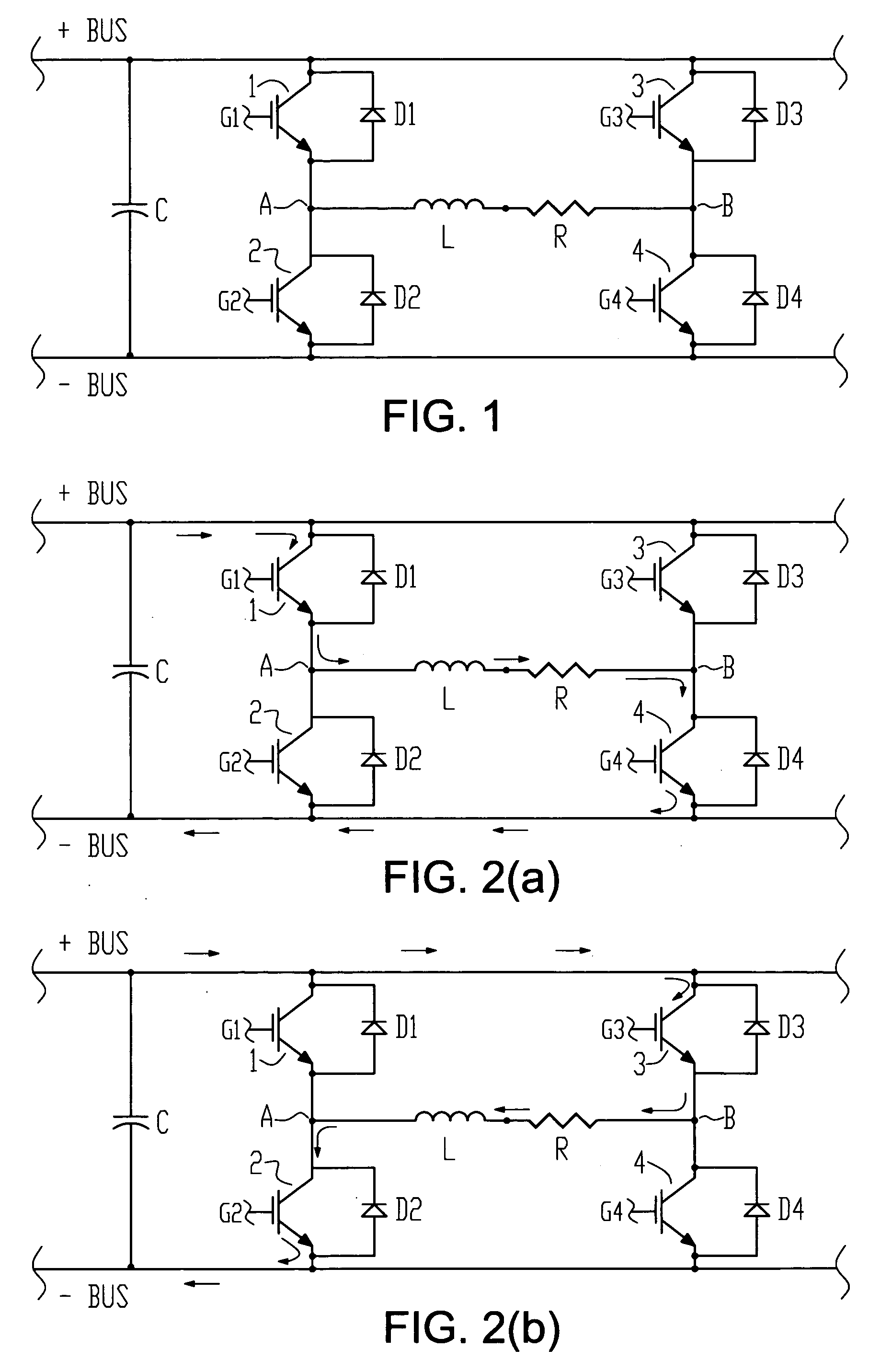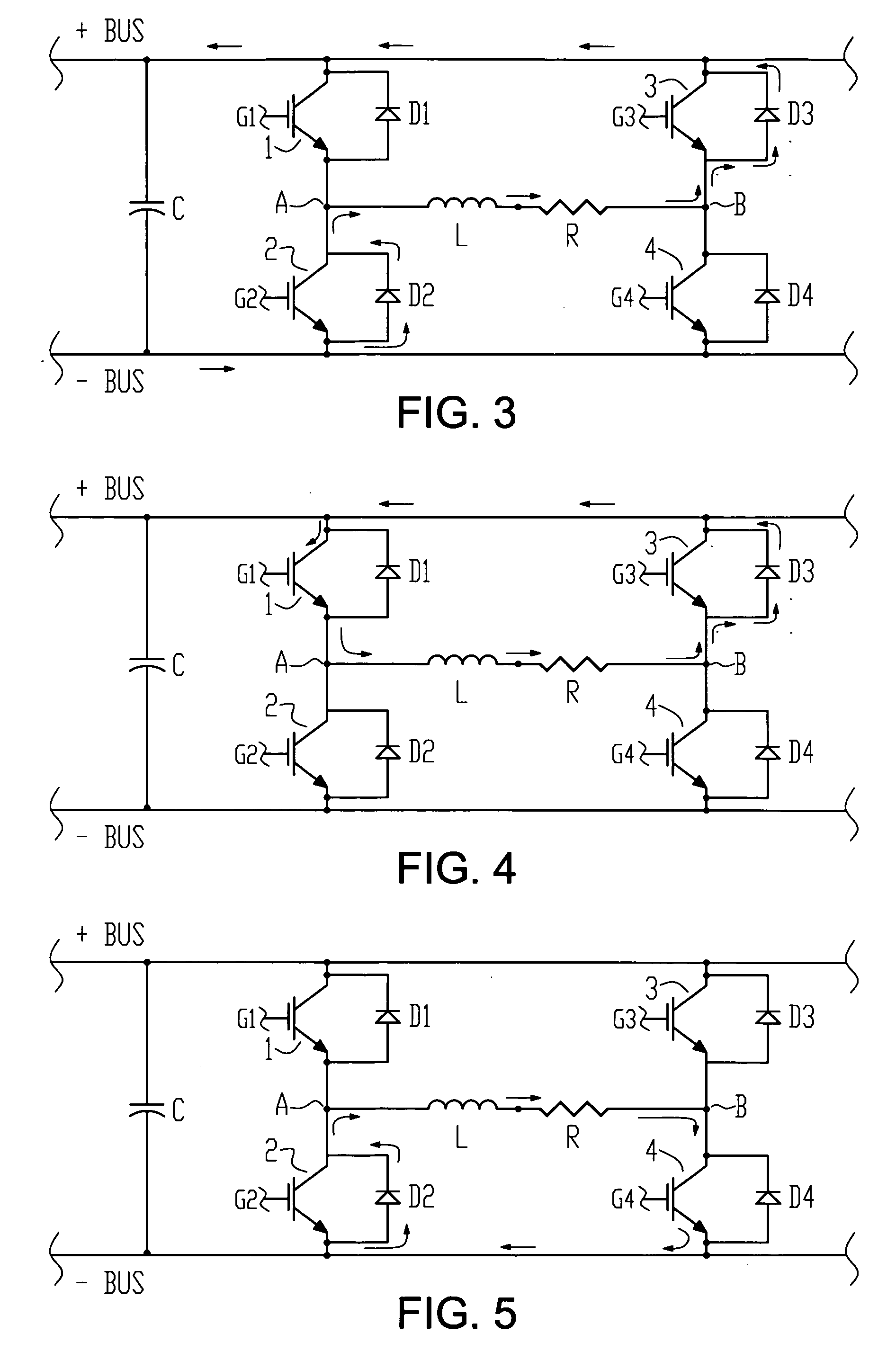Pulse width modulated power inverter output control
- Summary
- Abstract
- Description
- Claims
- Application Information
AI Technical Summary
Benefits of technology
Problems solved by technology
Method used
Image
Examples
Embodiment Construction
[0022]FIG. 6 illustrates one application in which the PWM inverter output control method of the present invention can be used. DC power is inputted to inverter 6 from a single phase rectifier formed from diodes D5, D6, D7 and D8, with capacitor C serving as an energy storage and filter element. PWM control circuit 8 includes gate driver circuitry for gates G1, G2, G3 and G4 of switching devices 1, 2, 3 and 4, respectively. Although IGBT switching devices are illustrated in FIG. 6, other types of switching devices may be used. Each of the switching devices has an allowed switching rate, as defined by the specification for a specific switching device. The gate driver circuitry controls turn on and turn off of the switching devices, including alternative pulsing of the switching devices as further described below. In some examples of the invention, suitable circuitry provides inputs to the PWM control circuit 8 for regulating the alternative pulsing scheme, including pulse frequency an...
PUM
 Login to View More
Login to View More Abstract
Description
Claims
Application Information
 Login to View More
Login to View More - Generate Ideas
- Intellectual Property
- Life Sciences
- Materials
- Tech Scout
- Unparalleled Data Quality
- Higher Quality Content
- 60% Fewer Hallucinations
Browse by: Latest US Patents, China's latest patents, Technical Efficacy Thesaurus, Application Domain, Technology Topic, Popular Technical Reports.
© 2025 PatSnap. All rights reserved.Legal|Privacy policy|Modern Slavery Act Transparency Statement|Sitemap|About US| Contact US: help@patsnap.com



